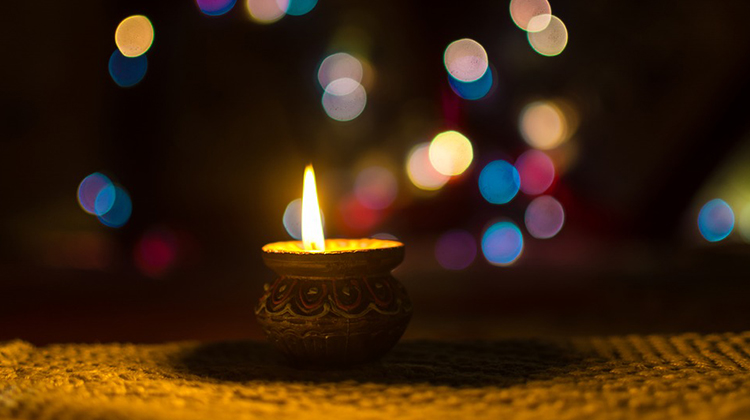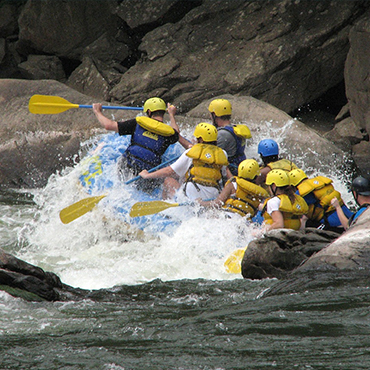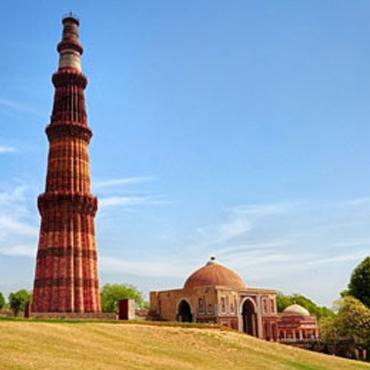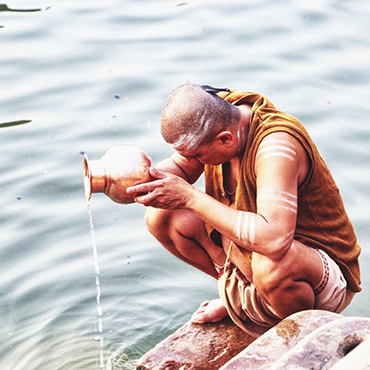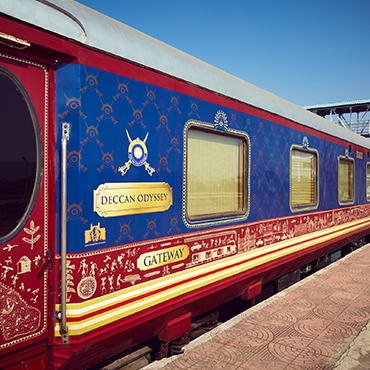CULTURAL PROGRAMMES
Culture is the social behavior and norms found in human societies. Culture is considered a central concept in anthropology, encompassing the range of phenomena that are transmitted through social learning in human societies.
CULTURAL PROGRAMMES
Culture is the social behavior and norms found in human societies. Culture is considered a central concept in anthropology, encompassing the range of phenomena that are transmitted through social learning in human societies.
CULTURAL PROGRAMMES

DAY & PROGRAMME
01 : ARRIVE MUMBAI
Meeting and assistance on arrival and transfer to the hotel.
Mumbai the capital of Maharashtra, is a melting point of culture, religions, languages and cuisine. It’s about beaches, amusement parks, pubs and discos. It’s about experiences, stories, hopes and aspirations.
Rest of the day at leisure. Overnight at the hotel.
02 : MUMBAI
After breakfast proceed to visit Gateway of India, Prince of Wales Museum (closed on Mondays) Fish Aquarium, Jain Temple, Hanging Garden on the slopes of Mahabar Hills offering nice view of Marine Lines and Chowpatty Beach, Kamala Nehru Park. Mani Bhawan (Where Mathama Gandhi used to stay) then to Dhobi Ghat.
Also drive past Afghan church, Flora Fountain (Bombay nerve-center), colorful Crawford Market and Marine Drive.
Overnight at the hotel.
03 : MUMBAI
Breakfast at the hotel. (Optional excursion to Elephanta Caves).
The day at leisure.
Overnight at the hotel.
04 : MUMBAI – UDAIPUR BY FLIGHT
In time transfer to the airport to board flight for Udaipur. Meeting and assistance on arrival in Udaipur and transfer to the hotel.
Udaipur is a beautiful city, set amidst the Aravalli Ranges of Rajasthan. Known for its picturesque lakes, also called 'the city of lakes'. The elevated hills and the beautiful lakes make a picture-perfect backdrop to the Udaipur city. It is famous for its captivating lakes, but the city has many more attractions that catch the attention of the tourists with their charm. The famous “White City” of Rajasthan stands on the banks of the lake Pichola, its many white marble palaces reflecting in the lake’s calm waters.
Rest of the day at leisure. Overnight at the hotel.
05 : UDAIPUR
After breakfast proceed for full day sightseeing visiting The Bharatiya Lok Kala Musuem, has interesting collection exhibited by this Indian folk arts museum includes folk dresses, ornaments, puppets, masks, dolls, folk musical instruments, folk deities and paintings and the high point of the exhibits puppets.
City Palace - Towering on the banks of Pichola Lake, City Palace is truly a feast to the eyes. It boasts of the wonderful blend of Medieval, European and Chinese Architecture. The Palace has various towers, domes and arches, which add to the flavor of heritage site. Jagdish Temple - is made in the Indo-Aryan style of architecture.
Saheliyon-ki-Bari (Queen Resort for her friends) is a small ornamental garden was a popular relaxing spot where royal ladies came for a stroll and hence the name.
Bharatiya Lok Kala Musuem has interesting collection exhibited by this Indian folk arts museum includes folk dresses, ornaments, puppets, masks, dolls, folk musical instruments, folk deities and paintings and the high point of the exhibits puppets.
In the evening enjoy a boat cruise and watch spectacular sunsets on the sparkling Lake Pichola that overlooks green hills and pleasant Udaipur vistas.
Overnight at the hotel.
06 : UDAIPUR
Breakfast at the hotel. The day at leisure.
Overnight at the hotel.
07 : UDAIPUR – JODHPUR BY SURFACE (269 KMS)
After breakfast drive to Jodhpur enroute visiting the Ranakpur Jain Temple which was built during the reign of the liberal and gifted Rajput monarch Rana Kumbha in the 15th century. The total number of columns is 1,444 all of which are intricately carved with no two being alike. The main temple is a Chaumukh or a four-faced temple dedicated to Adinath. The three other Jain temples in the same complex, including a temple of the Sun God, are all well worth a visit. One kilometer away from the temple complex is the temple of Amba Mata.
On arrival in Jodhpur check-in at the hotel.
Jodhpur, Nestling within the depths of the Thar Desert, is the stronghold of the Rathore clan - Jodhpur, once the capital of the former princely state of Marwar, the second largest city of Rajasthan, after Jaipur. The town was once known as Marwar, which means 'Land of Death', probably, referring to the harsh desert climate. It is an island of marble palaces, cordoned off from the desert by an immense wall, with eight gates facing different directions.
Overnight at the hotel.
08 : JODHPUR
After breakfast proceed for sightseeing tour visiting the Mehrangarh Fort, situated on a low sandstone Hill, including Moti-Mahal and Phool Mahal. This fort is one of the largest fort in India. The fort is situated at an altitude of about 125 metres and is spread over an area of 5 sq km, with seven gates. It has been a witness to the splendor of bygone era. The beauty and the grandeur of numerous places in the fort narrate a saga of hard sandstones yielding to the chisels of skilled Jodhpur sculptures. Mehrangarh literally means "Majestic Fort".
Visit Jaswant Thada which is a white marble memorial built in memory of Maharaja Jaswant II in 1899 A story goes that Maharaja Jaswant succumbed to injuries in this place while fighting the Mughal king Jahangir.
Umaid Bhawan Palace - This immense palace known as Chittar Palace because of the local chittar sandstone used. The only palace built in 20th century under the famine. It was built in a time of peace and is quite western in its design. It was built as a famine relief project which employment to people for 16 years. It has its own theatre, eight dining rooms, and a banquet hall which seats three hundred people. A Ball Room had been built, catering to the Westernized royal lifestyle. Much of the interior of the palace is in the art deco style. In fact, it is said to be one of the finest surviving examples of art deco in the world. Deep within the palace is an indoor swimming pool, with a mosaic of zodiac symbols. The palace now runs as a hotel, though, a part of it has been retained as a museum and part as royal residence.
Government Musuem - This museum has a rich collection of weapons, textiles, miniature portraits, sculptures, antique weapons, local crafts and images of Jain Tirthankars. It is situated in the middle of the Umaid public gardens.
Overnight at the hotel.
09 : JODHPUR
Breakfast at the hotel. Day at leisure.
Overnight at the hotel.
10 : JODHPUR – JAIPUR BY SURFACE (332 KMS)
After breakfast drive to Jaipur and on arrival check-in at the hotel.
Jaipur the capital city of Rajasthan is the first planned city of India. It has been the capital of the royalty and it still retains the glory of the past through the monuments, forts and palaces built by Rajaputs, the Royal Family. The entire city of Jaipur is painted in pink and thereby attained the name Pink City. The customs, traditions, civilization and legacy of the place is truly different. Artistic temples and gardens of Jaipur make the atmosphere serene and the cultural heritage makes it effervescent.
Overnight at the hotel.
11 : JAIPUR
After breakfast proceed excursion to the Amber Fort.
The Amber Fort looks stunning, all-built in white marble and red sandstone. To add to its charm, Maotha Lake makes its foreground. The crystal mirror image of the Fort, on the still waters of the lake, seems to be a beautiful illusion. The marvelous decoration of the Amer Fort is influenced by both, the Hindu and Muslim manner of ornamentation. The best part of this tourist attraction situated on a crafty hill, is the royal elephant ride. The flawless beauty of the Fort can be enjoyed royally with an elephant ride.
Within the palace are the Diwan-e-Aam or the "Hall of Public Audience", the Diwan-e-Khas or the "Hall of Private Audience" and the Sukh Niwas where a cool breeze blows across channels of water for the purpose of air-conditioning.
The Jai Mandir or the "Temple of Vicotry", with its famed Sheesh Mahal, the scintillating "Hall of Mirrors".
Afternoon visit City Palace and Jantar Mantar (Observatory).
The City Palace – is now converted into a Museum. The architecture of the City Palace is a synthesis of Rajasthani and Mughal styles. The Complex comprises of many structures, courtyards, gardens and buildings. The City Palace does not only have a lot of historical significance but is also a reminder of the royal past. It stands as a symbol of the royal elegance and courtly splendor that is no longer visible. Other important attractions are the Textile and Costume Museum, Art Gallery, Chandra Mahal, Mubarak Mahal, and Diwan-i-Khas and Diwan-i-Am.
Hawa Mahal, when it is drenched in the golden light of the Sun. At this time, Hawa Mahal appears incredible. The golden light of the early morning sun floats beautifully through the windows of this palace creating a wonderful sight for one and all.
Hawa Mahal is a major landmark and a famous tourist attraction of Jaipur. The literal meaning of Hawa Mahal is Palace of Winds. The Palace offers a beautiful sight to behold. The splendid Rajputana architecture of Hawa Mahal, still speaks the glory of the royal family. This sandstone edifice was named Palace of Winds after the many brass wind vanes that adorned it until 1960s.
Jantar Mantar (Observatory) - at Jaipur is the largest stone observatory in the World and this feature makes it, a special destination for a traveler. Jantar Mantar has a remarkable collection of architectural astronomical instruments. It portrays noteworthy attempt of the ancestors, who were interested in astronomy and knowledge of celestial bodies. Amongst all the instruments, the Sundial usually attracts the maximum attention of people, which tells the time to an accuracy of about two seconds in local time of Jaipur.
Overnight at the hotel.
12 : JAIPUR
Breakfast at the hotel.
Day at leisure. Overnight at the hotel.
13 : JAIPUR – RANTHAMBORE BY SURFACE (161KMS)
After breakfast drive to Ranthambore and check-in at the hotel.
Ranthambore – Nestled amidst the Aravalli and Vindhya ranges, with good forest cover, nullahs and waterfalls. The park is famous for its tigers and is one of the best places in the country to see these majestic predators in the wild. Tigers can be spotted easily in their natural habitat during daytime particularly at the confluence of three lakes-Padam Talab, Raj Bagh Talab and Milak Talab. The typical feature of the park is that out of the entire park some areas are open for the tourists to wander in and explore the flora and fauna of the park.
Rest of the day at leisure. Overnight at the hotel.
14 : RANTHAMBORE
Early morning Jungle Safari at the National Park.
Breakfast at the hotel. Rest of the day at leisure.
Overnight at the hotel.
15 : RANTHAMBORE
Early morning Jungle Safari at the National Park.
Breakfast at the hotel. Rest of the day at leisure.
Overnight at the hotel.
16 : RANTHAMBORE – AGRA BY SURFACE (269 KMS)
After breakfast drive to Agra and enroute visiting Fatehpur Sikri.
Fatehpur Sikri Thirty-nine kilometers from Agra stands Fatehpur Sikri, the red sandstone city of yesteryears. The city was built by the Mughal Emperor Akbar in AD 1564 in honor of the Muslim saint Sheikh Salim Chisthi.
Fatehpur Sikri was intended to be the capital city but the shortage of water and unrest in the north-west made Akbar abandon it after 14 years. One of the major attractions of this city is the marble tomb of Sheikh Salim Chisthi. Other places of interest include Diwan-i-Aam, Diwan-i-Khas, Buland Darwaza, Panch Mahal,Jodha Bai’s Palace and Birbal Bhavan.
Agra is famous as being home to one of the "seven wonders of the world - The Taj Mahal". This city was once the capital of the Mughal empire and it has several monuments which display the splendour of Mughal architecture. Besides the monuments, Agra is worth a visit for the masterpieces of craftsmen recreating the glory of the Mughal period and for the Mughlai cuisine, the aroma of which fills the narrow lanes of Agra.
On arrival check-in at the hotel. Overnight at the hotel.
17 : AGRA
In the early morning visit Taj Mahal. The Taj looks extremely enchanting at sunrise when it changes its color from a Light Pink to White.
Taj Mahal - The enchanting mausoleum, on the bank of river Yamuna was built by a grief stricken Emperor Shahjahan as a memorial to his beloved wife Mumtaj Mahal. A world-renowned wonder, Taj Mahal Sits pretty on the northern side of this green paradise. It looks the same from all the four sides! This magnificent monument is set around a Charbagh or 'four garden' plan, which is split by watercourses-a reflection of the Persian style.
After breakfast visit Agra Fort - Agra Fort is Agra's dominant human made structure. Agra Fort was constructed by the Mughal Emperor Akbar on the year 1565 and beautified with palaces and gardens by Jehangir. Agra Fort is noted for its tasteful marble and pietra dura inlay. One can enter the fort only through the Amar Singh Gate. The public access is limited to the southern part of the fort, which includes nearly all the buildings of tourist interest. The Diwan-i-Aam (hall of public audience) and Diwan-i-Khas (hall of private audience) were built by Shahjahan for receiving audiences & Pearl Mosque.
Jehangir's Palace built by Akbar was the largest private residence in the fort. Close to Diwan-i-Khas, stands an octagonal tower known as Musamman Burj. It was here that Shahjahan breathed his last after seven years of imprisonment. Other places to see within the fort include the Khas Mahal, Sheesh Mahal (the mirror palace) and the Anguri Bagh (the Grape Garden).
Overnight at the hotel.
18 : AGRA
Breakfast at the hotel. Day at leisure.
Overnight at the hotel.
19 : AGRA – JHANSI BY SHATABDI EXPRESS (0817 – 1043 HRS)
JHANSI – KHAJURAHO BY SURFACE (172 KMS)
In time transfer to the Railway Station to board Shatabdi Express for Jhansi.
Meeting and assistance on arrival in Jhansi and drive to Khajuraho, enroute visiting Orcha.
Orcha situated on the banks of Betwa River and surrounded by verdant hills and greenery, the place served as the capital of the powerful kingdom of the Bundela. Its historical structures are witness to the glorious past. Orcha's impressive temples date back to the 16th century. The place still retains the medieval charm.
Visit its famous palaces and temples including the Jehangir Mahal, Raj Mahal,Ram Raja Temple and Chaturbhuj Temple.
On arrival check-in at the hotel.
Khajuraho is known the world over for its temples, sex, architecture and sculpture.
The construction of these Temples are thousand-year old took a little over two
centuries, in terms of architecture of these temples, they form the high peak of the north Indian 'nagara' style. Temple town of Khajuraho is much different from any other temple city of India. It is not about religion and worshipping and deities. The temples of Khajuraho are instead famous for the eroticism etched on its walls in the form of sculptures.
Overnight at the hotel.
20 : KHAJURAHO
After breakfast proceed full day tour visiting the world famous Khajuraho temples built by the Chandela kings between 950 AD and 1050 AD. The most important are the Chaunset Yogini Temple dedicated to Goddess Kali.
The Mahadev Temple. Chitragupta or Bharatji Temple with a lovely image of 11 headed Vishnu, Vishvanath and Nandi Temples, Lakshmana Temple, Visha Temple dedicated to Shiva, which is the largest and most typical of temples.
Overnight at the hotel.
21 : KHAJURAHO
Breakfast at the hotel. The day at leisure.
Overnight at the hotel.
22 : KHAJURAHO – VARANASI BY FLIGHT
In time transfer to the airport to board flight for Varansi. Meeting and assistance on arrival in Varanasi and transfer to the hotel.
The holy city of Varanasi, known as the city of temples and learning, is a place of great historical and cultural importance. This religious capital of India is situated on the banks of the holy river Ganges. It is the heart of India and an epitome of the synthesis of cultures, religions and races. The river-front of the city is decorated by hundreds of well-built ghats which is a unique feature. This vibrant city of joy knowledge and liberation has a magnetic attraction for people all over the world.
Rest of the day at leisure. Overnight at the hotel.
23 : VARANASI
Early morning Boat Excursion on the holy river Ganges to see the bathing ghats and cremation site. Watching people bathing and worshipping at the Ghats is one of the most extraordinary experiences of a visit to India.
After breakfast visit Bharat Mata Temple with a big relief map of India in marble, Durga temple, Tulsi Manas Mandir. Banaras Hindu University which has an Art Gallery and the Mosque of Mughal Emperor Aurangazeb.
Evening watch Ganga Arathi at Ganges.
Overnight at the hotel.
24 : VARANASI – SARANATH – VARANASI (20 KMS ONEWAY)
After breakfast excursion to Saranath marks birth of the religion of Gautama Buddha. According to history, it is the place where Lord Buddha delivered his first sermon. Hence it became a great center of Buddhist activities and remained so for more than a millennium and a half. The inscriptions refer to the site as the “Monastery of the turning of the wheel of Righteousness” (Saddharmachakra – pravartana Vihara). The ruins of Saranath covered an extensive area. Among the ruins at Saranath,the most imposing is no doubt the Dhamekh Stupa.
The earliest remains here at Sarnath are from the Mauryan period ascribed to Emperor Ashoka the great. The Lion Capital is the national emblem of India. The Dharmarajika Stupa was built by Ashoka, and it was expanded and enlarged several times up to the 12th century CE.
Return to Varanasi for overnight stay.
25 : VARANSI – DELHI BY FLIGHT
In time transfer to the airport to board flight for Delhi. Meeting and assistance on arrival in Delhi and transfer to the hotel.
Delhi – The name brings the complexities, the contradictions, the beauty and the dynamism of a city where the past co-exist with the present. Many dynasties ruled here and have left behind a rich heritage of architectural value through their monuments. Drives cultural elements absorbed into the daily life of the city have enriched its characters. Exploring the city can be a fascinating and rewarding experience.
Rest of the day at leisure. Overnight at the hotel.
26 : DELHI
After breakfast proceed for half day sightseeing of Old Delhi visiting – Raj Ghat and Shanti Vana – the cremation sited of Mahatma Gandhi and Jawaharlal Nehru. Also drive past Red Fort, built in 1648 by Mughal Emperor Shahjahan, Jama Masjid, one of the longest mosque in India and Chandni Chowk, shopping center of Delhi.
Rest of the day at leisure. Overnight at the hotel.
27 : DELHI
After breakfast proceed for half day sightseeing of New Delhi visiting Qutab Minar, is an excellent example of Afghan Achitecture. This 72.5 mts. high tower of victory, built in 1193 by Qutab-ud-din Aibak. No one can, however, dispute that the tower is not only one of the finest monuments in India, but also in the world. The ruins of Quwwat-Ui-Islam (Light of Islam) Mosque (The first mosque to be built in India.) Close to the mosque is one of Delhi's most curious antiques, The Iron Pillar (7 m-high) stands in the courtyard of the mosque.
India Gate (War Memorial Arch). Another memorial, Amar Jawan Jyoti - The eternal flame burns day and night under the arch to remind the nation of soldiers who laid down their lives in the Indo-Pakistan War of December 1971. Lakshminarayan Temple – a modern Hindu Temple. Also drive past Presidential House, Parliament House, and Government Secretariat Buildings.
Rest of the day at leisure. Overnight at the hotel.
28 : DEPART DELHI
In time transfer to the Airport to board flight for onward destination.
End of the programme. Check-in is at 1400 Hrs & check-out time is at 1200 Hrs at the hotels.
DAY & PROGRAMME
01 : Arrive Delhi
Meeting and assistance on arrival and Check-in at the hotel.
Delhi – The name brings the complexities, the contradictions, the beauty and the dynamism of a city where the past co-exist with the present. Many dynasties ruled here and have left behind a rich heritage of architectural value through their monuments. Drives cultural elements absorbed into the daily life of the city have enriched its characters. Exploring the city can be a fascinating and rewarding experience.
Overnight at the hotel.
02 : Delhi
After breakfast visit - Raj Ghat - the cremation site of Mahatma Ghandi, drive past Red Fort, built in 1648 by Mughal Emperor Shahjahan, Jama Masjid, one of the longest mosque in India and Chandini Chowk, shopping center of Delhi. New Delhi visiting Qutaub Minar built by Qutub – ud –Din Aibek in 1199. India Gate (War Memorial Arch). Lakshminarayan Temple – a modern Hindu Temple and drive past President House, Parliament House, and Government Secretariat Buildings.
Overnight at the hotel.
03 : Delhi – Agra by surface (204 Kms)
After breakfast drive to Agra and check-in at the hotel.
Agra is famous as being home to one of the "seven wonders of the world - The Taj Mahal". This city was once the capital of the Mughal Empire and it has several monuments which display the splendour of Mughal architecture. Besides the monuments, Agra is worth a visit for the masterpieces of craftsmen recreating the glory of the Mughal period and for the Mughlai cuisine, the aroma of which fills the narrow lanes of AOvernight at the hotel.
Afternoon visit Taj Mahal & Agra Fort.
The world famous Taj Mahal built by the Moghul Emperor Shahjehan in 1630 for his Queen Mumtaz Mahal to enshrine her mortal remains.
Perhaps no other historical monument has evoked as much awareness and admiration from tourists and travellers alike, as the magnificent Taj Mahal - fondly called by people as the ultimate requiem of love, from a great Mughal Emperor to his beloved.
So overwhelming is the exquisite beauty and presence of this marble mausoleum that centuries later today, even the very land where it has been located - Agra - has been immortalised as the City of the Taj. Yet, it doesn’t take much for the roving eye to discover that there's more to Agra than just the fabled Taj Mahal. The city is a virtual gateway to a world of discovery… a freeze-frame from a resplendant era that's long since gone by.
Agra Fort containing the Pearl Mosque, the Halls of Public and Private Audience. Also visit the Tomb of Itmad-ud-Daullah built by Empress Noorjehan in memory of her father.
Overnight at the hotel.
04 : Agra – Jaipur by surface (238 Kms)
After breakfast drive to Jaipur enroute visiting Fatehpur Sikri.
The royal city at Fatehpur Sikri, situated 40 Kms miles west of Agra, was built at the orders of the Mughal Emperor Akbar in 1569 and abandoned after 15 years due to scarcity of water. While Akbar himself was illiterate, he took a keen interest in literature, architecture, and the arts. He is also reputed to be a very tolerant ruler, and the buildings at Fatehpur Sikri blended both Islamic and Hindu elements in their architectural style. One of the buildings even reflects the new sycretistic faith founded by Akbar, Din-e-ilahi, which though very short-lived remains a matter of controversy.
On arrival in Jaipur check-in at the hotel.
Jaipur the capital city of Rajasthan is the first planned city of India. It has been the capital of the royalty and it still retains the glory of the past through the monuments, forts and palaces built by Rajaputs, the Royal Family. The entire city of Jaipur is painted in pink and thereby attained the name Pink City. The customs, traditions, civilization and legacy of the place is truly different. Artistic temples and gardens of Jaipur make the atmosphere serene and the cultural heritage makes it effervescent.
Overnight at the hotel.
05 : Jaipur
After breakfast proceed excursion to the Amber Fort.
The Amber Fort looks stunning, all-built in white marble and red sandstone. To add to its charm, Maotha Lake makes its foreground. The crystal mirror image of the Fort, on the still waters of the lake, seems to be a beautiful illusion. The marvelous decoration of the Amer Fort is influenced by both, the Hindu and Muslim manner of ornamentation. The best part of this tourist attraction situated on a crafty hill, is the royal elephant ride. The flawless beauty of the Fort can be enjoyed royally with an elephant ride.
Within the palace are the Diwan-e-Aam or the "Hall of Public Audience", the Diwan-e-Khas or the "Hall of Private Audience" and the Sukh Niwas where a cool breeze blows across channels of water for the purpose of air-conditioning. The Jai Mandir or the "Temple of Vicotry", with its famed Sheesh Mahal, the scintillating "Hall of Mirrors".
Afternoon visit City Palace and Jantar Mantar (Observatory).
The City Palace – is now converted into a Museum. The architecture of the City Palace is a synthesis of Rajasthani and Mughal styles. The Complex comprises of many structures, courtyards, gardens and buildings. The City Palace does not only have a lot of historical significance but is also a reminder of the royal past. It stands as a symbol of the royal elegance and courtly splendor that is no longer visible.
Other important attractions are the Textile and Costume Museum, Art Gallery, Chandra Mahal, Mubarak Mahal, and Diwan-i-Khas and Diwan-i-Am.
Hawa Mahal is a major landmark and a famous tourist attraction of Jaipur. The literal meaning of Hawa Mahal is Palace of Winds. The Palace offers a beautiful sight to behold. The splendid Rajputana architecture of Hawa Mahal, still speaks the glory of the royal family.
Drive past Hawa Mahal - Strange though it may seem, this most famous landmark of Jaipur is not actually a palace but a series of sandstone screens. This pink structure was constructed so that the ladies of the palace could watch the royal processions without being seen by any outsider. This sandstone edifice was named Palace of Winds after the many brass wind vanes that adorned it until 1960s.
Jantar Mantar (Observatory) - at Jaipur is the largest stone observatory in the World and this feature makes it, a special destination for a traveler. Jantar Mantar has a remarkable collection of architectural astronomical instruments. It portrays noteworthy attempt of the ancestors, who were interested in astronomy and knowledge of celestial bodies. Amongst all the instruments, the Sundial usually attracts the maximum attention of people, which tells the time to an accuracy of about two seconds in local time of Jaipur.
Overnight at the hotel.
07 : Jaipur – Delhi by surface (258 Kms). Delhi – Varanasi by flight
After breakfast drive to Delhi Airport to connect flight to Varanasi.
Meeting and assistance on arrival and transfer to hotel.
Crowded with temples, and its labyrinth of streets, sunrise on the riverfront, as seen from a boat, is a spiritually uplifting sight, these are usual sights of Varanasi . Though Varanasi retains its heritage, the city is changing. New markets, commercial complexes and modern hotels make it a melting pot of both. The religious capital of Hinduism, Varanasi is the oldest living city in India , and one of the world’s most ancient. It was previously known as Kashi-the city that illuminates. The present name is derived from the fact that the city is at the confluence of the rivers Varuna and Asi.
Evening witness Ganga Aarti at the Ganges. Overnight at the hotel.
08 : Varanasi
Early morning boat excursion on the holy river Ganges to see the bathing ghats and cremation site. Watching people bathing and worshipping at the Ghats is one of the most extraordinary experiences of a visit to India.
After breakfast proceed for sightseeing tour visiting Bharat Mata Temple with a big relief map of India in marble, Durga temple, Tulsi Manas Mandir. Banaras Hindu University which has an Art Gallery and the Mosque of Moghul Emperor Aurangazeb.
Afternoon excursion to Sarnath - the buried Buddhist city where Buddha preached his first sermon. After attaining enlightenment at Bodh Gaya the Buddha went to Sarnath; and it was here that he preached his first discourse in the deer park to set in motion the 'Wheel of the Dharma'. It is one of the most holy sites as in this place the stream of the Buddha's teaching first flowed. Sarnath was a renowned school of learning from 16th century BC to 12th century AD. Visit the ruins, the stupa, the Buddhist temple & the museum (closed on Fridays). At the museum is the Ashok Pillar with its four guardian lions, used as independent Indias’ national emblem.
Overnight at the hotel.
09 : Varanasi – Delhi by flight.
Breakfast at the hotel. In time transfer to Airport to connect flight for Delhi. On arrival connect flight for onward destination.
End of the Programme. Check-in is at 1400 Hrs & Check-out time is 1200 Hrs.
